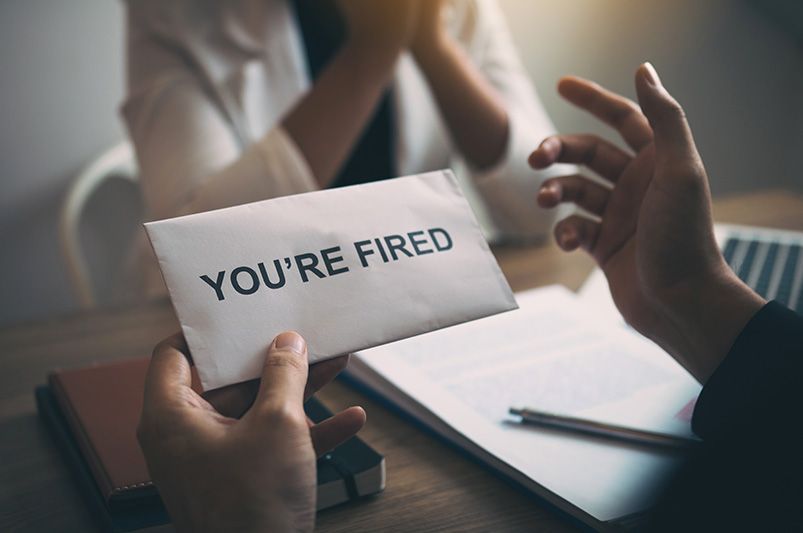Fired in California? Steps to Take Immediately
Published: 04/09/2025 | Updated: 04/09/2025
Being fired is stressful—especially when it happens suddenly. In California, where employment laws provide some of the strongest worker protections in the country, what you do in the days and weeks after termination can significantly impact your options.
Whether your firing was expected or came out of the blue, knowing the right steps to take can help you protect your rights, gather evidence, and prepare for a productive conversation with a lawyer. This guide walks you through practical, immediate actions you should take after being fired in California.
Step 1: Stay Calm and Professional
Emotions run high when you’re terminated, but your behavior in the moment matters. Staying calm helps you avoid saying or doing something that could harm your case later.
Tips for handling the moment:
-
Don’t argue or lash out: Keep your exit professional, even if the firing feels unfair.
-
Request clarity: Politely ask for the reason for your termination. Even if you suspect it’s unlawful, having their explanation is useful.
-
Gather personal belongings discreetly: Don’t take company property, sensitive documents, or anything that might complicate matters.
Step 2: Collect Documentation Immediately
Paperwork is your strongest ally when you’re considering legal options. Start building a file right away.
What to gather:
-
Termination letter: If one is provided, keep a copy.
-
Employee handbook and contracts: These documents can reveal whether policies were violated.
-
Performance reviews and emails: Documentation showing your work quality, promotions, or praise.
-
Pay stubs and benefits info: Helps track unpaid wages, overtime, or benefits owed.
-
Any correspondence about your firing: Emails, texts, or notes from the termination meeting.
Pro Tip: Write down your own account of the events while they’re fresh in your mind. Dates, conversations, and the sequence of events can fade quickly.
Step 3: Secure Digital Evidence
In today’s workplace, much of your history with an employer exists online. Before you lose access, consider:
-
Download pay and benefit statements from HR portals.
-
Save performance reviews, goals, or work reports that reflect your role.
-
Take screenshots of schedules, communications, or software records that may support your case.
-
Record login dates/times if relevant to proving hours worked.
Important: Only save information you are legally entitled to access. Do not attempt to hack or use restricted systems.
Step 4: Review the Circumstances of Your Firing
California is an “at-will” employment state, meaning employers can fire workers for almost any reason—but not for illegal reasons such as:
-
Discrimination (age, race, gender, religion, disability, etc.)
-
Retaliation for reporting misconduct or harassment
-
Punishment for using family or medical leave
-
Termination for asserting wage and hour rights
If any of these factors ring a bell, it may be worth pursuing a legal claim.

Step 5: Protect Your Finances Immediately
A sudden job loss can quickly affect your income and security. Acting early helps soften the impact.
Practical steps:
-
Apply for unemployment benefits: In California, you can apply online through the Employment Development Department (EDD).
-
Check severance packages: If offered, review carefully before signing. Consider having a lawyer look it over.
-
Continue health insurance: Look into COBRA or Covered California options to avoid a lapse in coverage.
Step 6: Prepare to Talk to a Lawyer
If you suspect your firing was illegal—or if you just want clarity on your rights—speaking with an employment lawyer is the best next step.
How to prepare:
-
Organize all the documentation you collected.
-
Write a timeline of events leading up to your firing.
-
Note down any witnesses who may have seen or heard key incidents.
-
List your questions, such as: Was this termination legal? Do I have a claim for unpaid wages? Could this be discrimination or retaliation?
This preparation not only helps your lawyer evaluate your case quickly but also shows you’re serious and detail-oriented.
Step 7: Focus on Moving Forward
While protecting your rights is critical, so is your future. Alongside preparing for legal action, consider:
-
Updating your resume and LinkedIn profile.
-
Reaching out to your network for leads and opportunities.
-
Exploring training or certifications that might open new doors.
Remember: job loss is often a turning point that leads to something better. Protect your rights today, but also keep your eyes on tomorrow.
Conclusion
Being fired is never easy—but in California, you have strong protections as an employee. By staying calm, collecting evidence, protecting your finances, and preparing to speak with a lawyer, you set yourself up to navigate the situation with confidence.
The most important step? Don’t wait. The sooner you act, the more options you’ll have to protect yourself and pursue justice if your firing was unlawful.
Fired in California? Don’t face it alone.
JusticeGuys connects you with experienced employment lawyers who can review your situation, protect your rights, and guide your next steps. Find the right lawyer today.
Just lost your job in California?
Stay on track with our free California Firing Response Checklist—a step-by-step guide to protect your rights, secure your finances, and prepare for a lawyer consultation.